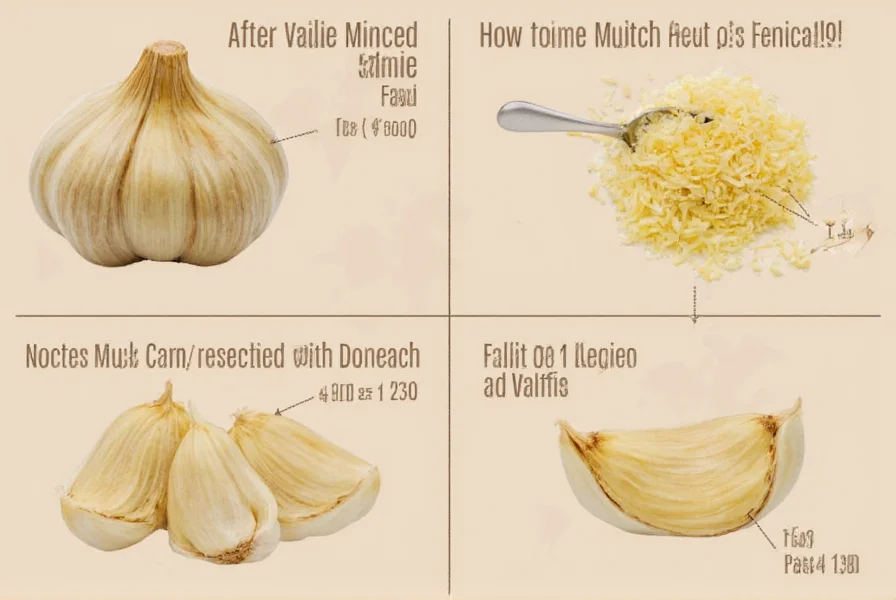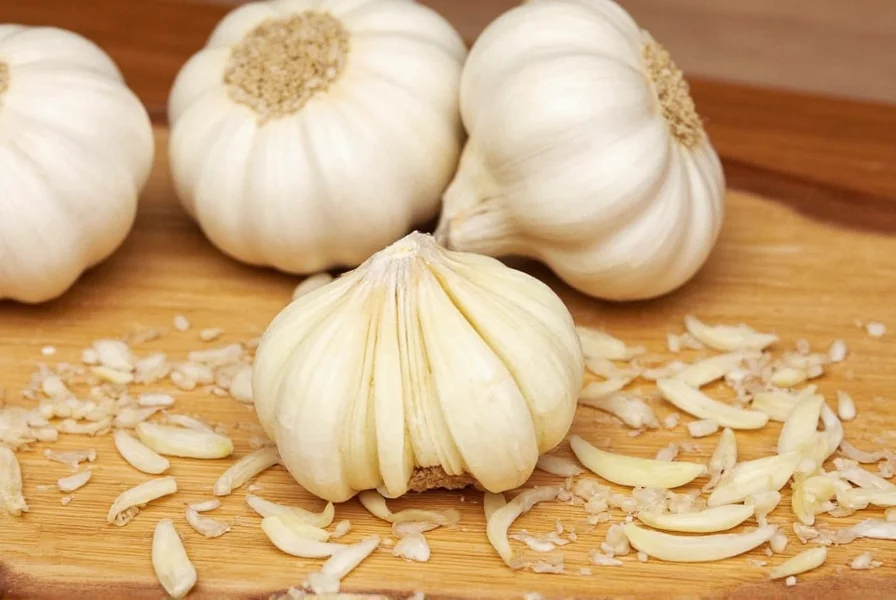Understanding garlic measurements is essential for achieving perfect flavor balance in your cooking. Many recipes call for minced garlic without specifying exact quantities, leaving home chefs wondering how much is a minced clove of garlic in practical terms. This guide provides precise measurements, conversion charts, and professional cooking insights to help you use garlic effectively in any recipe.
Standard Garlic Measurements Explained
Garlic measurements vary based on clove size and preparation method. Most culinary professionals and recipe developers use the following standard conversions:
| Garlic Form | Equivalent Measurement | Weight |
|---|---|---|
| One medium fresh garlic clove | 1/2 teaspoon minced | 3-7 grams |
| One large fresh garlic clove | 1 teaspoon minced | 8-10 grams |
| One teaspoon minced garlic | 2 medium cloves | 6-14 grams |
| One tablespoon minced garlic | 6 medium cloves | 18-42 grams |
| One cup minced garlic | 48-50 medium cloves | 225-250 grams |

Factors Affecting Garlic Measurements
Several variables impact how many teaspoons in a minced garlic clove you'll get:
- Clove size - Garlic bulbs contain cloves of varying sizes, with outer cloves typically larger than inner ones
- Moisture content - Freshly harvested garlic contains more moisture than cured garlic
- Preparation method - Hand-minced versus garlic press versus food processor yields slightly different volumes
- Packing density - How tightly you pack the minced garlic into measuring spoons affects the actual quantity
Garlic Clove to Tablespoon Conversion Guide
When recipes call for tablespoons of minced garlic rather than individual cloves, use this practical conversion guide:
- 1 tablespoon minced garlic = 6 medium cloves
- 2 tablespoons minced garlic = 12 medium cloves
- 1/4 cup minced garlic = 24 medium cloves
- 1/2 cup minced garlic = 48 medium cloves
Professional chefs often recommend starting with slightly less garlic than specified in recipes, then adjusting to taste after cooking has begun. Garlic flavor intensifies as it cooks, and personal preferences for garlic strength vary considerably.

Using Bottled Minced Garlic as Substitute
Many home cooks wonder about garlic clove to bottled minced garlic conversion when fresh garlic isn't available. Bottled minced garlic typically contains preservatives that affect both flavor and measurement:
- 1 teaspoon bottled minced garlic ≈ 1.5 teaspoons fresh minced garlic in volume
- Flavor intensity: Bottled garlic is generally milder than fresh
- Substitution ratio: Use 3/4 teaspoon bottled for every 1 teaspoon fresh minced garlic
For the most accurate how much minced garlic equals one clove measurement in your specific cooking context, consider weighing your garlic. A food scale provides the most consistent results, especially for baking or precise recipe development where weight of one minced garlic clove matters more than volume.
Practical Tips for Garlic Measurement
Follow these professional kitchen techniques for consistent garlic measurements:
- Use a microplane grater for the most consistent minced garlic texture
- When measuring, lightly pack minced garlic into spoons without compressing
- For roasted garlic, one roasted clove yields about 1/4 teaspoon of paste
- Freeze excess minced garlic in ice cube trays for future use (1 cube = 1 clove)
- Remember that smaller cloves have more concentrated flavor than larger ones
Understanding how much is a minced clove of garlic helps prevent common cooking mistakes like overpowering dishes with too much garlic or creating imbalanced flavor profiles. The next time your recipe calls for "2 cloves garlic, minced," you'll know exactly how much to add for perfect results every time.
How much dried garlic equals one fresh minced clove?
One fresh minced garlic clove equals approximately 1/8 teaspoon of garlic powder. For garlic granules, use 1/4 teaspoon to replace one fresh minced clove. Remember that dried garlic has more concentrated flavor, so start with less and adjust to taste.
Does the size of the garlic clove significantly affect the measurement?
Yes, clove size dramatically affects measurements. Small cloves may yield only 1/4 teaspoon minced, while jumbo cloves can produce up to 1 teaspoon. For consistent results in baking or precise recipes, weighing is recommended (3-7 grams for medium cloves).
How do I convert whole garlic cloves to minced for large recipes?
For large batches, use this conversion: 1 cup of minced garlic equals approximately 48-50 medium cloves. When scaling recipes up or down, remember that garlic flavor compounds change with quantity - doubling garlic doesn't simply double the flavor intensity due to chemical interactions during cooking.
Why does my recipe call for minced garlic instead of chopped?
Minced garlic has smaller particle size than chopped, which affects both flavor release and distribution. Minced garlic releases more allicin (the compound responsible for garlic's characteristic flavor) and distributes more evenly throughout dishes. The finer texture also cooks faster and integrates better with sauces and dressings.
How can I tell if I've added too much garlic to a dish?
Signs of too much garlic include an overpowering sharpness that dominates other flavors, a burning sensation in the mouth, or digestive discomfort after eating. To fix an over-garlicked dish, add acid (lemon juice or vinegar), sweetness (a pinch of sugar), or dairy (cream or yogurt) to balance the flavors. For future reference, remember that one minced clove equals 1/2 teaspoon - measure precisely for consistent results.










 浙公网安备
33010002000092号
浙公网安备
33010002000092号 浙B2-20120091-4
浙B2-20120091-4